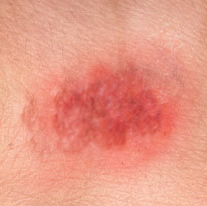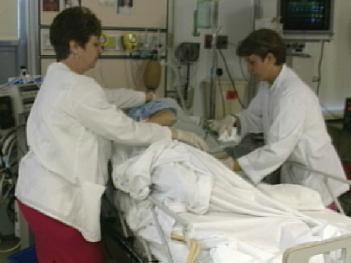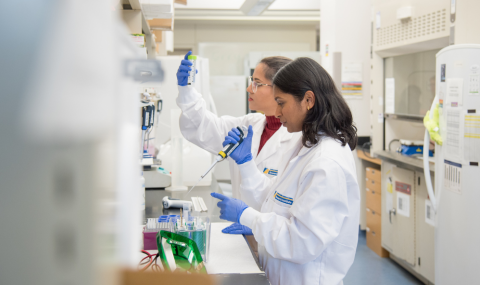|
SKIN BREAKDOWN; PRESSURE ULCERS; DECUBITUS ULCERS Critically ill patients are at risk for many complications. Lying in bed can put pressure on the skin, especially in areas where bones are close to the surface (such as the tailbone and heels). Pressure cuts of the blood flow to the capillaries, the tiny vessels responsible for delivering oxygen and nutrients to the skin. When the skin is deprived of blood flow, the skin can become damaged and develop ulcers. Damage to the skin's surface is called "Skin Breakdown". While pressure is an important cause for pressure sores, edema, low blood flow, drugs used to correct low blood pressure and poor nutrition also increase the risk for skin breakdown. Skin can also be damaged by friction, infections, excessive perspiration and chemical irritation from urine, stool or other secretions. Ulcers caused by pressure are called "Decubitus Ulcers" or "Pressure Ulcers ". Patients require special skin care during critical illness to prevent or treat pressure sores. In CCTC, specially designed beds are used to reduce the pressure on the skin. Patients are turned or repositioned frequently. The skin is inspected frequently and kept clean and dry. Feeding is another important part of the care of the critically ill. It is important to both recovery and the prevention of complications. Skin health requires adequate nutrition. When a patient has a breathing tube in place, feeding is provided through a feeding tube or by a special intravenous formula (Image 3). Unfortunately, very ill patients often have several risk factors for skin breakdown. At times, they may even be too ill to tolerate turning. Prolonged life-saving procedures or operations that require the patient to remain in one position for a long period of time can add to the risk for skin breakdown.
|
Image 1: |
|
Image 2: |
|
|
Image 3: Patients are repositioned frequently |
|
|
|
|
|
|
Last Updated:: October 23, 2014






